Collaborating with other departments is a core part of work of any finance professional. Setting budget, managing expenditures, conducting financial analyses and business reviews requires inputs of different stakeholders within the organization. This is where Microsoft Teams can be beneficial for your finance team. This platform offers multiple capabilities that can accelerate your collaboration process, increase team productivity and therefore drive better business results.
In this article we will talk about how your finance professionals can benefit from Microsoft Teams.
Key collaboration challenges in the financial services industry
Let’s have a look at the key collaboration challenges that the finance industry is facing these days.
The need for agility
In order to thrive in the constantly changing environment financial companies are striving to be more dynamic and adaptable. This also holds true for all the sectors of the economy – the quicker you are to react to changes, the higher are your chances of staying in the market.
For large companies with a long history, the difficulty here is to break the traditional ways of working, reduce the structure and the processes. Having a collaboration platform that enables faster and easier communication and accelerates collaborative process can be a good way to start. It’s not a panacea – however, it’s a first step towards restructuring your work.
Compliance and security
Protecting organizational and client information and preventing disclosure are one of the key concerns of using digital collaboration tools in financial services. Strict compliance policies that will not only prevent third parties from accessing sensitive data, but also minimize employee errors is the core priority for financial firms.
Manual repetitive tasks
Working in finance involves aggregating data, performing analyses, building reports, as well as doing other repetitive manual tasks. In order to improve group productivity, automate certain repetitive tasks and accelerate manual work, your team can leverage digital collaboration platforms. They offer multiple tools that help drive efficiency across different business processes.
How Microsoft Teams empowers finance professionals
Secure collaboration
Microsoft Teams has numerous capabilities that allow your users to collaborate efficiently and securely with people both inside and outside your organization.
External and guest access
Microsoft Teams allows your finance team to communicate efficiently not only with other departments within the organization, but also with external players such as partners and clients. You can customize external and guest permissions in the Microsoft Teams admin center. By doing so you will protect your organization from accidental data leaks without hindering communication with people outside your company.

Learn more about Microsoft Teams security best practices.
Private and shared channels
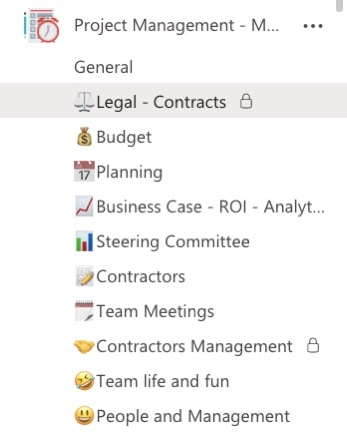
You can have secure conversations on confidential matters with specific team members in private channels in Microsoft Teams. There is no need to create a separate team for discussing a sensitive topic of a project your whole team is working on. You can also invite guest users to private channels.
Recently Microsoft announced Microsoft Teams Connect which will be generally available later this year. It helps organizations collaborate seamlessly with customers, partners, suppliers or other external parties through shared channels. With shared channels, users can add individuals to a single channel rather than to an entire team.
Compliance
Teams has a number of policies that can help you with compliance areas.
Information barriers
Information barriers prevent certain groups of people from communicating with one another. This policy can be applied, for example, to prevent the accounting team from sharing a client’s financial information with the customer support.

DLP
Data loss prevention capabilities allow you to define policies that prevent people from sharing sensitive information in a Microsoft Teams channel, including private channels, as well as a chat session.

DLP protects your information both in messages and in documents.
Retention policies
Retention policies enable you to retain data important to your organization and remove irrelevant content and communications.
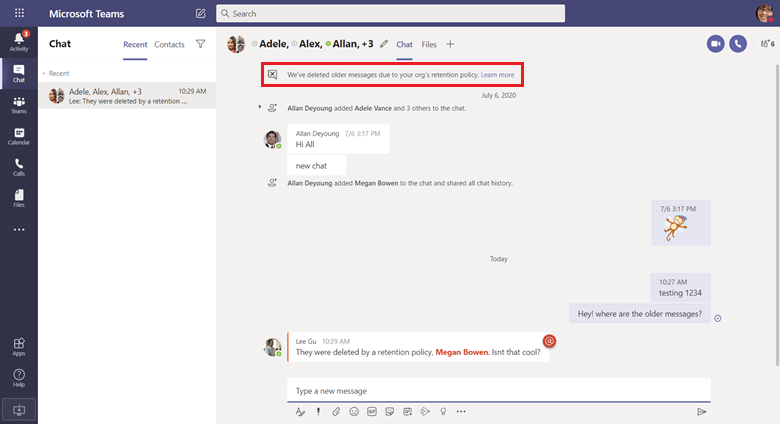
To find out more about Microsoft Teams compliance policies head over to this article.
Archiving
Archiving inactive teams prevent users from accessing outdated or sensitive information and therefore minimizes possibilities of information leaks. You can set up expiration policies in the Azure AD admin center.

Audit log
You can track any user activity with audit logging. For example, if you need to find if a user viewed a specific document, you could search the unified audit log in the Microsoft 365 compliance center to view user and administrator activity.

Cloud app security
For your organization’s data safety, you can regulate what cloud services are available for your users in the admin center. This way, you can prevent shadow IT and make sure your confidential data is not stored in other apps.

Communication capabilities
Microsoft Teams allows your employees to always stay connected and communicate easily through various communication channels, including chat, channels, calls, and meetings.
Private chats and channel posts
No need to send an email to colleagues to get a quick reply – you can send a quick message in a one-on-one or a group chat for a private discussion or make a post in a channel and mention the right group of people.

Notifications
Tagging and setting message priority will make sure your post will reach the right people. It will also inform them about the importance of your message.

Meetings
With Microsoft Teams you can organize interactive and engaging meetings with screen sharing and integrating apps right in the meeting environment.

Integrations
What makes Microsoft Teams a platform suitable for any type of organization is its capability to seamlessly integrate other apps into its environment. This stimulates productivity and helps personalize the app for each organization.
Integration with Office 365 suite
Microsoft has multiple tools that together with Teams can boost your team performance, improve communication and help organize your time and tasks.
Word, Excel, and PowerPoint integrated with Teams allow your team members collaborate on document in real-time, co-author, leave comments and track changes. You will no longer need to send emails with updates files and wait for approval from various colleagues.

Planner allows you to better manage tasks and track their progress.
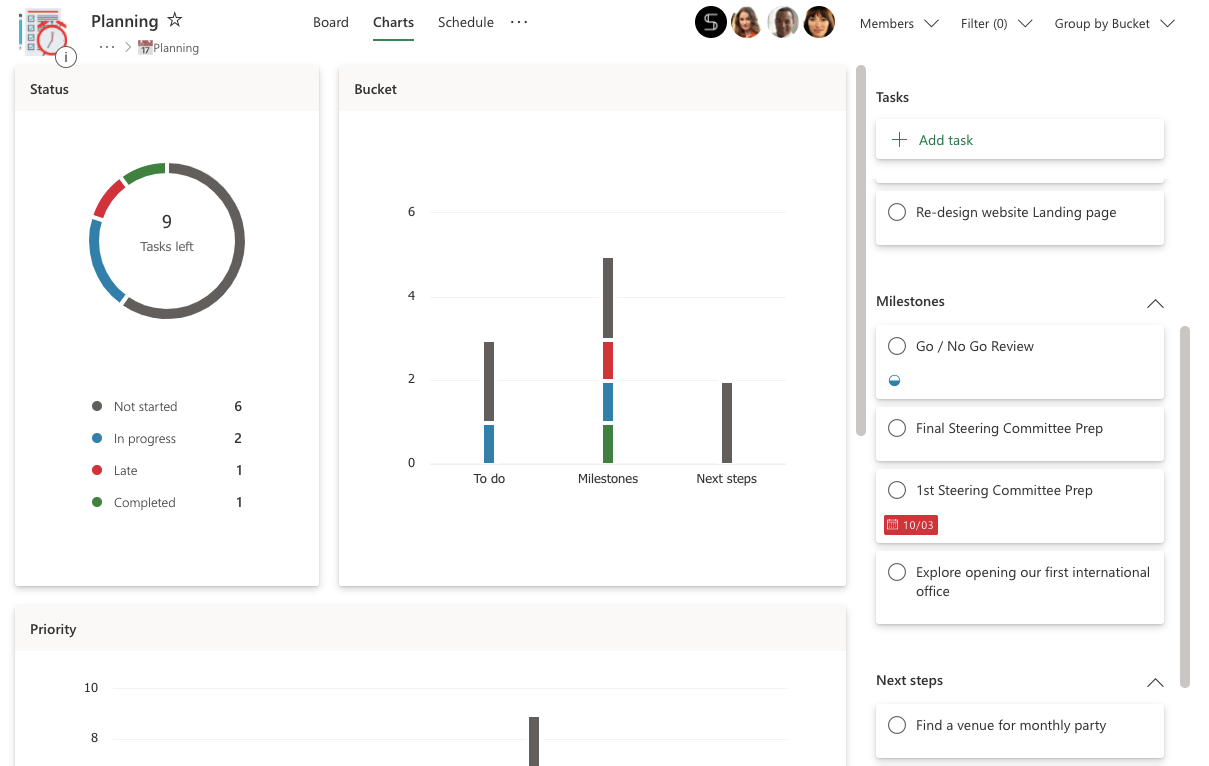
Power Automate can help your team automate certain routine tasks and minimize the human factor.
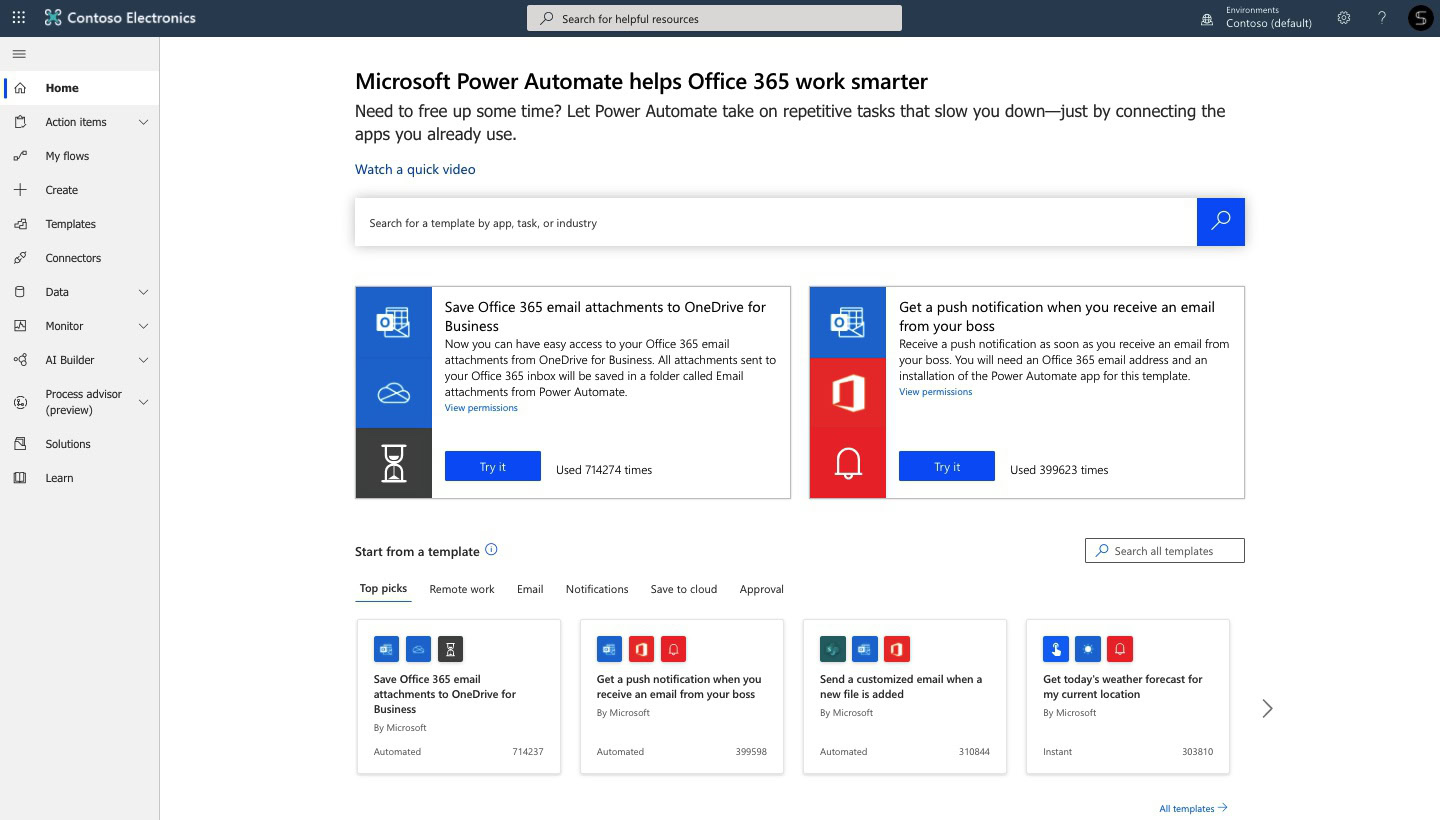
Power BI is an excellent tool for visualizing data and creating interactive reports for data-based decision-making.
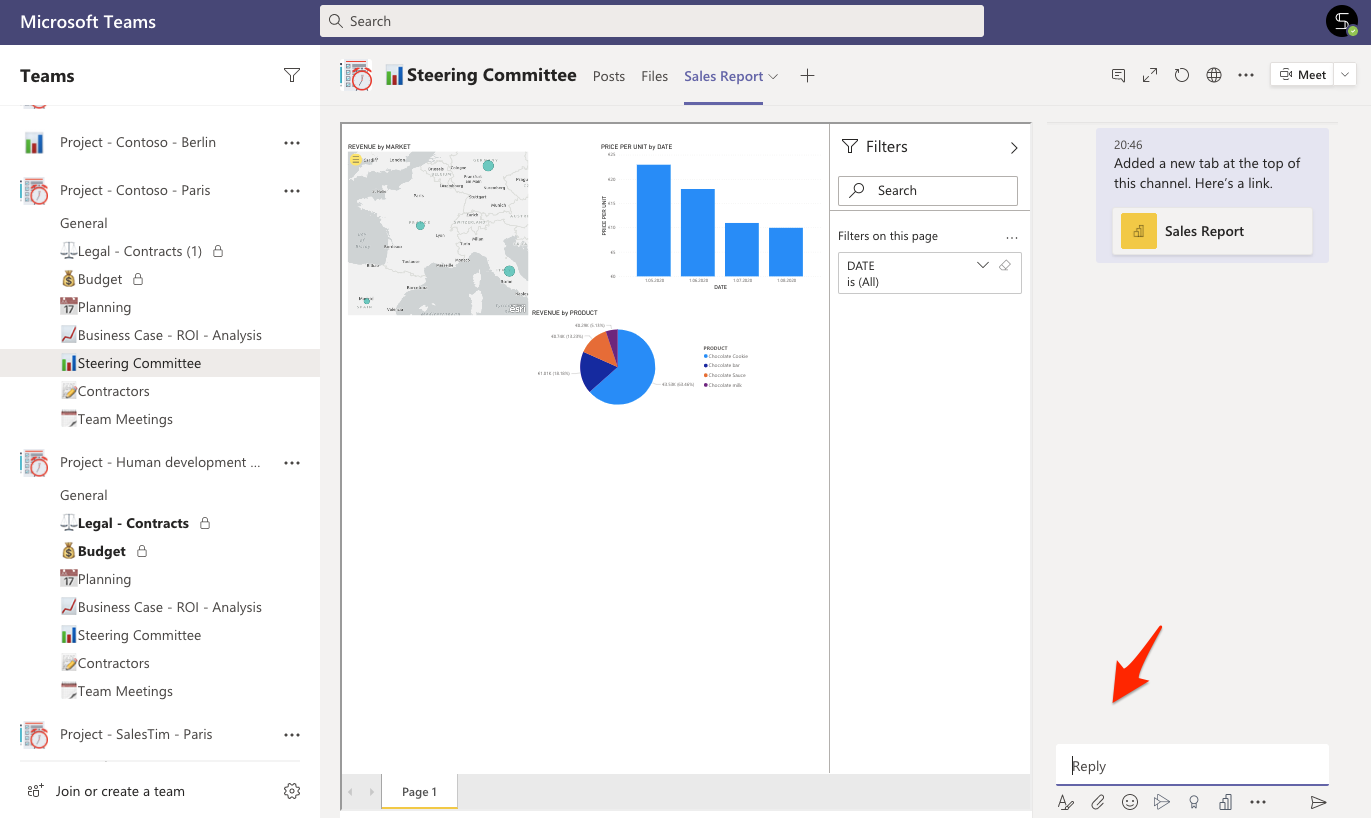
Forms allows your users to easily collect your colleagues’ and customers’ feedback.
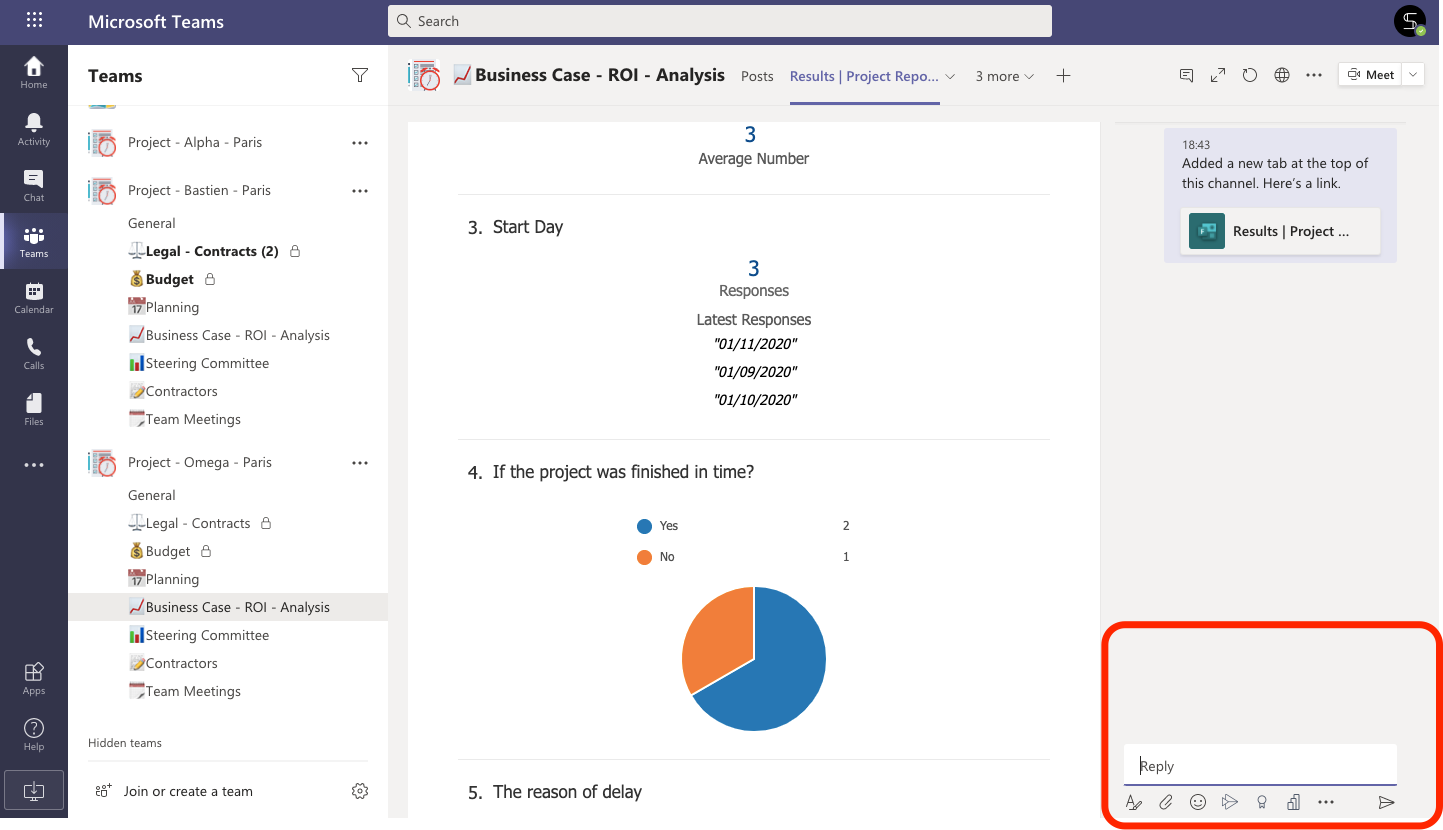
Learn more about Office 365 suite tools.
Third-party and line-of-business applications
If your organization uses other apps for managing its operations for example CRMs or has its own app for banking, insurance and other processes, it’s is possible to integrate them with Teams and include in tabs in Teams channels.
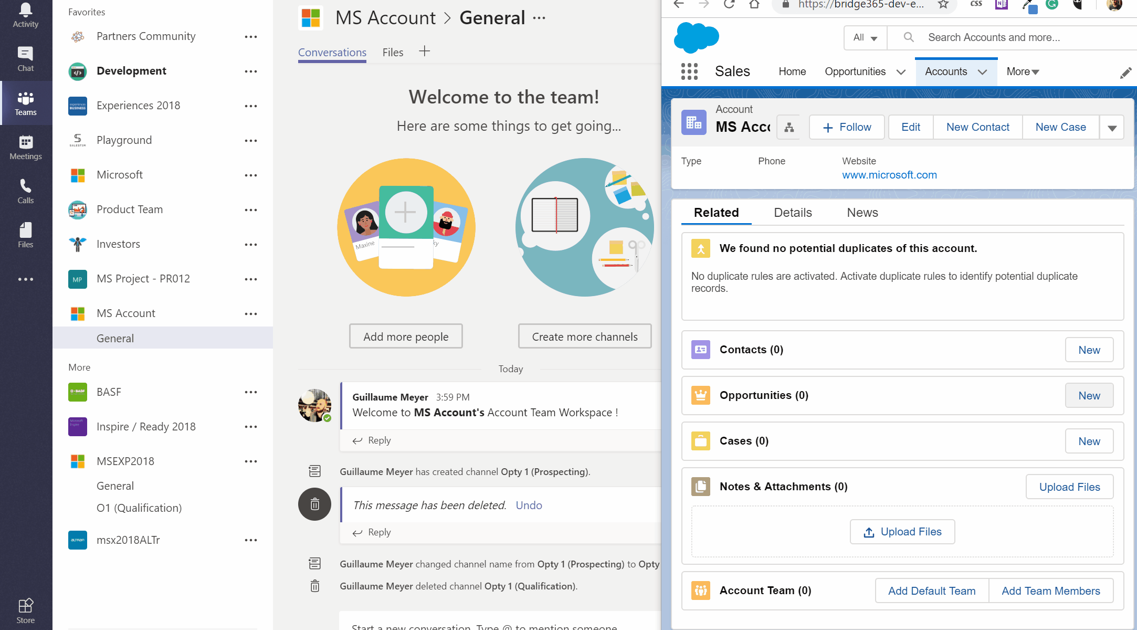
Learn more about Microsoft Teams and CRM integrations.
Chat bots
In order to automate certain routine manual tasks, you can install bots in Microsoft Teams. Bots allow users to search for and share information from different apps through texts, interactive cards and tasks.

Microsoft Teams templates for financial services
If you wish to improve collaborative processed across the entire organization, facilitate teams creation process and boost productivity of your employees, you can leverage Microsoft Teams templates.
If your organization creates a new team for managing each new case, proposal, claim, etc. the best way is to use provisioned templates with pre-built channels, files, and tabs with apps. Having ready-to-go teams that include all the elements your employees need to get started enables them to be more agile and productive.
To give you an idea of how it can work for you, let us demonstrate a few use cases where you could use Microsoft Teams collaboration templates by SalesTim for finance.
Proposal management
Instead of manually creating standard teams for each new proposal, you can build an original team just once and use it as a template to build proposal management teams in just a few clicks.
Channels
You may want to name your channels corresponding to each step of the proposal management process. We suggest the following examples:

- Proposal Development
- Planning
- Send out
- Evaluation
- Meetings
You can build both standard and private teams. Private channels will be visible only to team owners and those team members who were invited there.
Files and tabs
You can upload all the necessary files that can be useful for proposal management teams. It can be proposal templates, previous proposals, guidelines, draft schedules, etc. You may want to include some materials in Proposal Development channel to guide proposal writers.

In Planning channel you can add Planner as a tab and add tasks for preparing a proposal.
You can also add guidelines in the Wiki tab or a SharePoint site where you can specify responsibilities of each team members and the winning strategy.
When your original team is created, you can use it to create a template, and set up the required governance policies. All the information contained in the template will be automatically cloned into newly created teams, including files, folders and tasks in Planner.
Key account management
Key account management template can be used for creating pre-built teams for each of your key accounts.
Channels
The channels you decide to create for this template may vary and depend on your organization’s operations and culture. Here are some examples of channel names:

- Compete Watch
- Customer Support
- Legal – Contracts
- Customer Updates
- Contracts – Licensing
- Planning
- Opportunity Feed
- Partners
- Fun
You may also want to create private channels for your template that will be visible only to team owners and invited team members.
Tabs and files
You if you have a standardized action plan for working with your Accounts, you can formulate all the necessary tasks in Planner and pin it as a tab in the Planning channel.

When a new team is created, all the tasks with checklists, links, categories, and labels will be automatically cloned.
You can also build guidelines in a SharePoint site and add it as a tab for easy access and high visibility.
You may want to upload all the important and relevant documentation to the Files tab in different channels. Key documents can be pinned as tabs.
Retail bank
If your financial institution has multiple offices in various locations, each of them will require a sperate team to collaborate on day-to-day tasks. In order to make sure each of these team follow the same structure and have similar governance policies, you can use a Retail Bank template.
Channels
Examples of channels may be:

- Life and Fun
- Corporate news
- Shifts
- Customers
- Safety
- Market Information
Files and tabs
You may upload all the documentation that might be useful for each of your bank branches and pin the most important files as tabs in respective channels. For example, you can add safety instructions in Safety channel.
Your teams can stay up to date about corporate news with Yammer communities in Teams.
And you may also want to ass Shifts app or any other third-party app that your organization uses to manage employees shifts.
After creating your original teams you can start creating your templates and define their governance policies. You can learn more about templates governance here.
These are just a few examples of how Microsoft Teams can be used to improve collaboration in your finance department.
Book a demo with us to learn how Microsoft Teams collaboration templates by SalesTim can be applied for your business.
